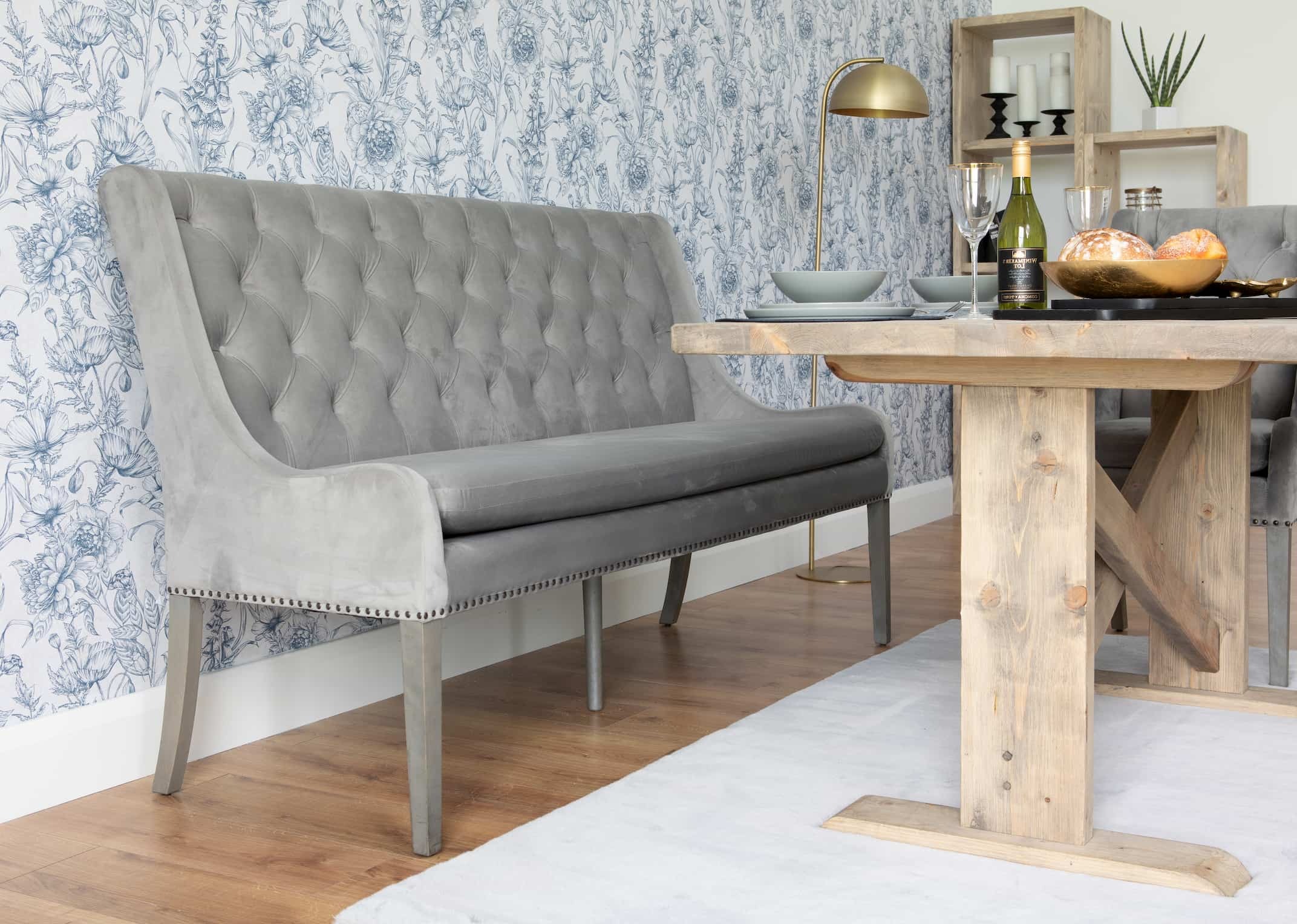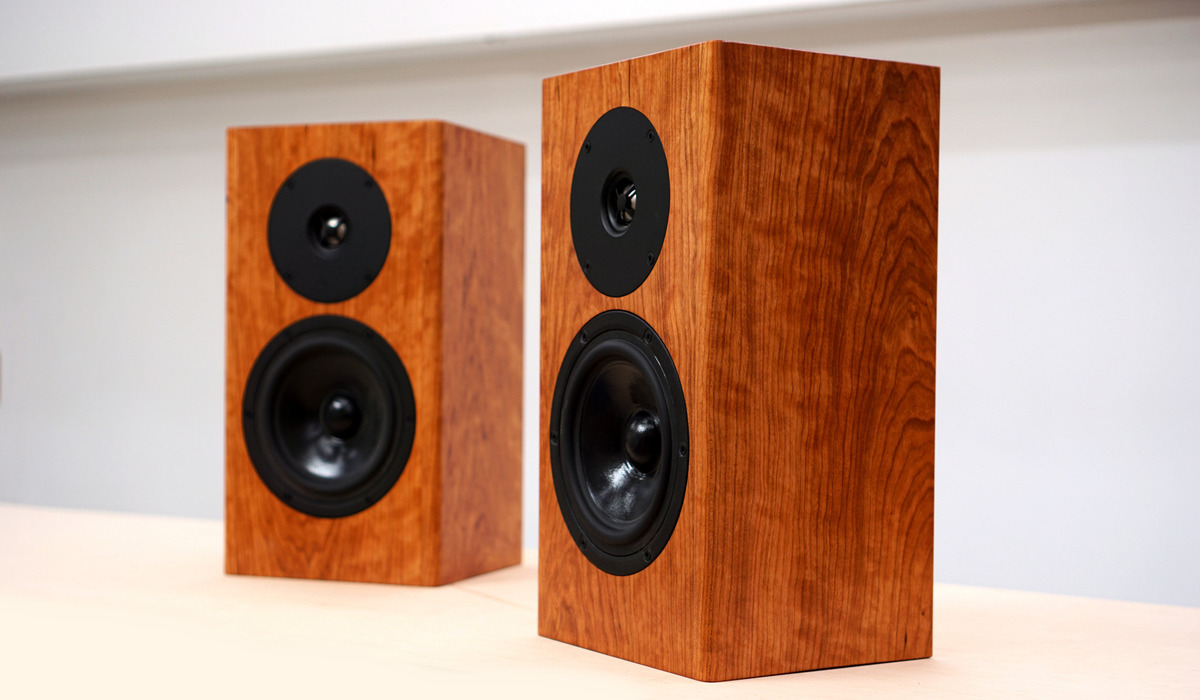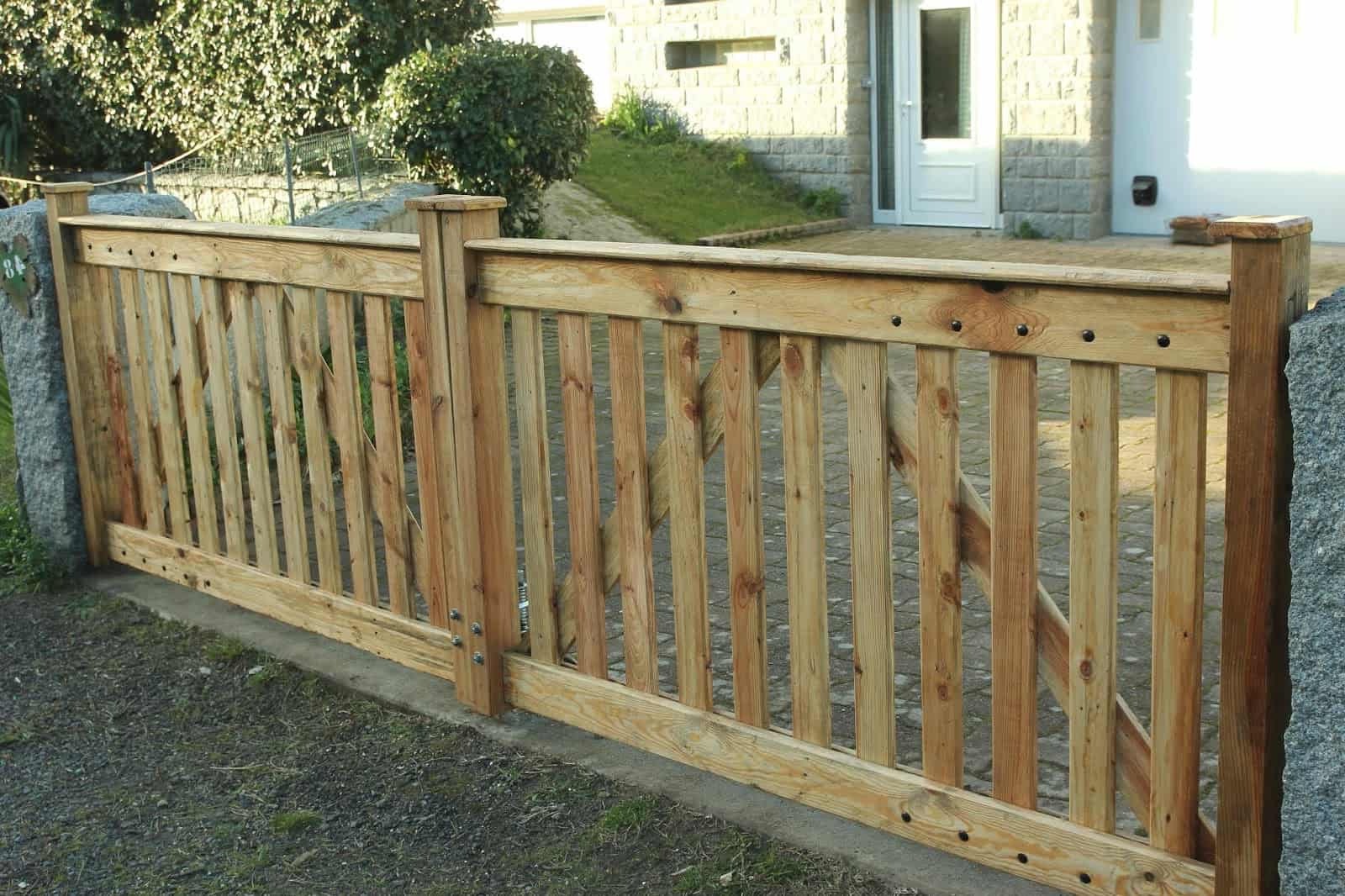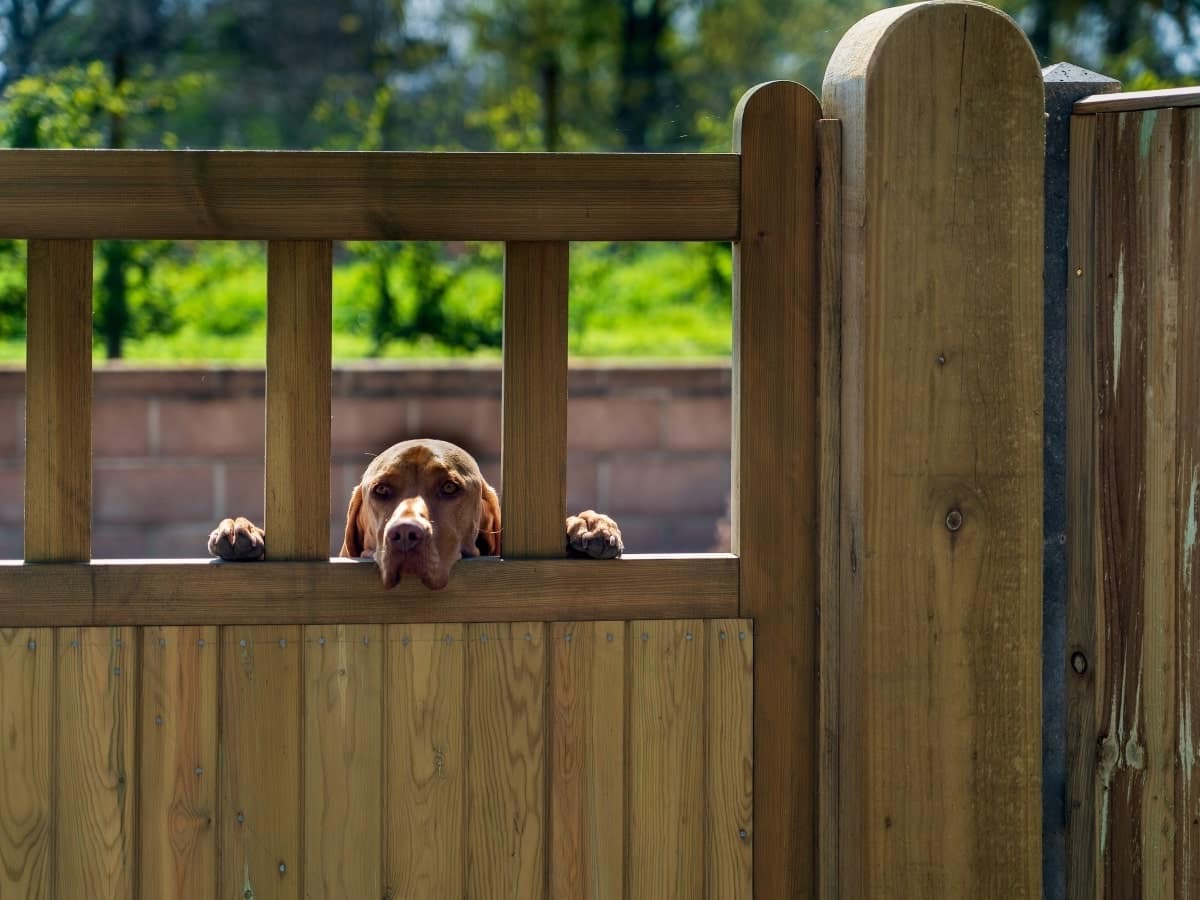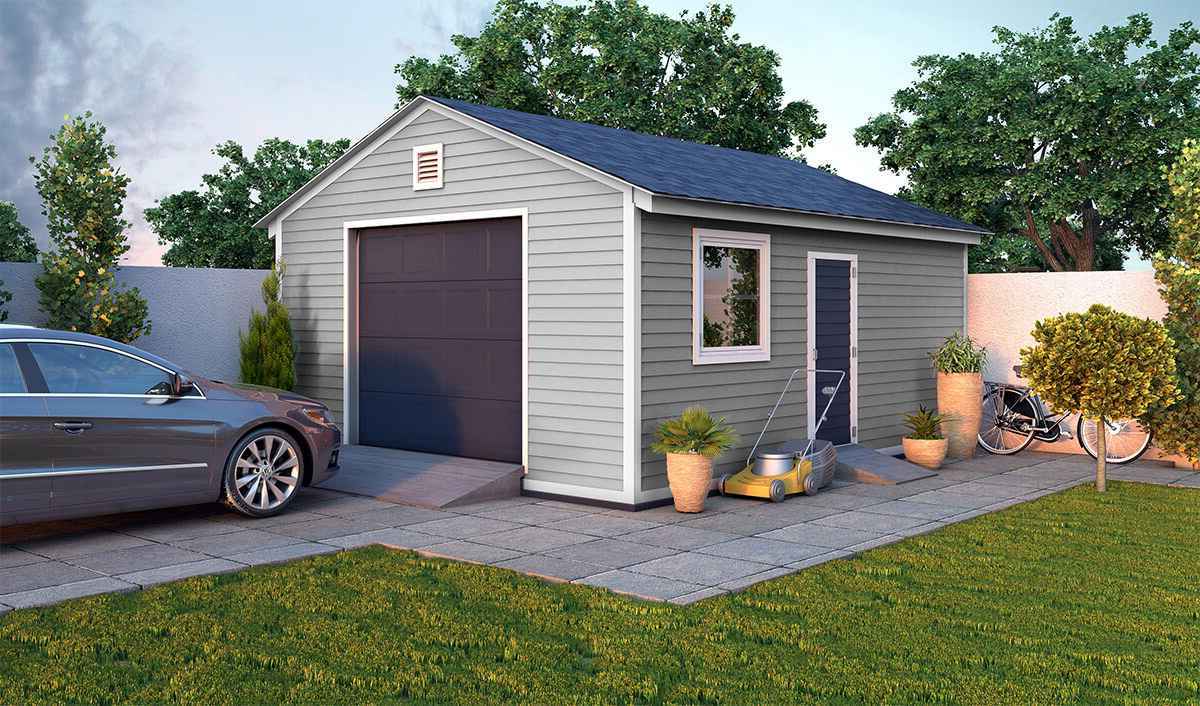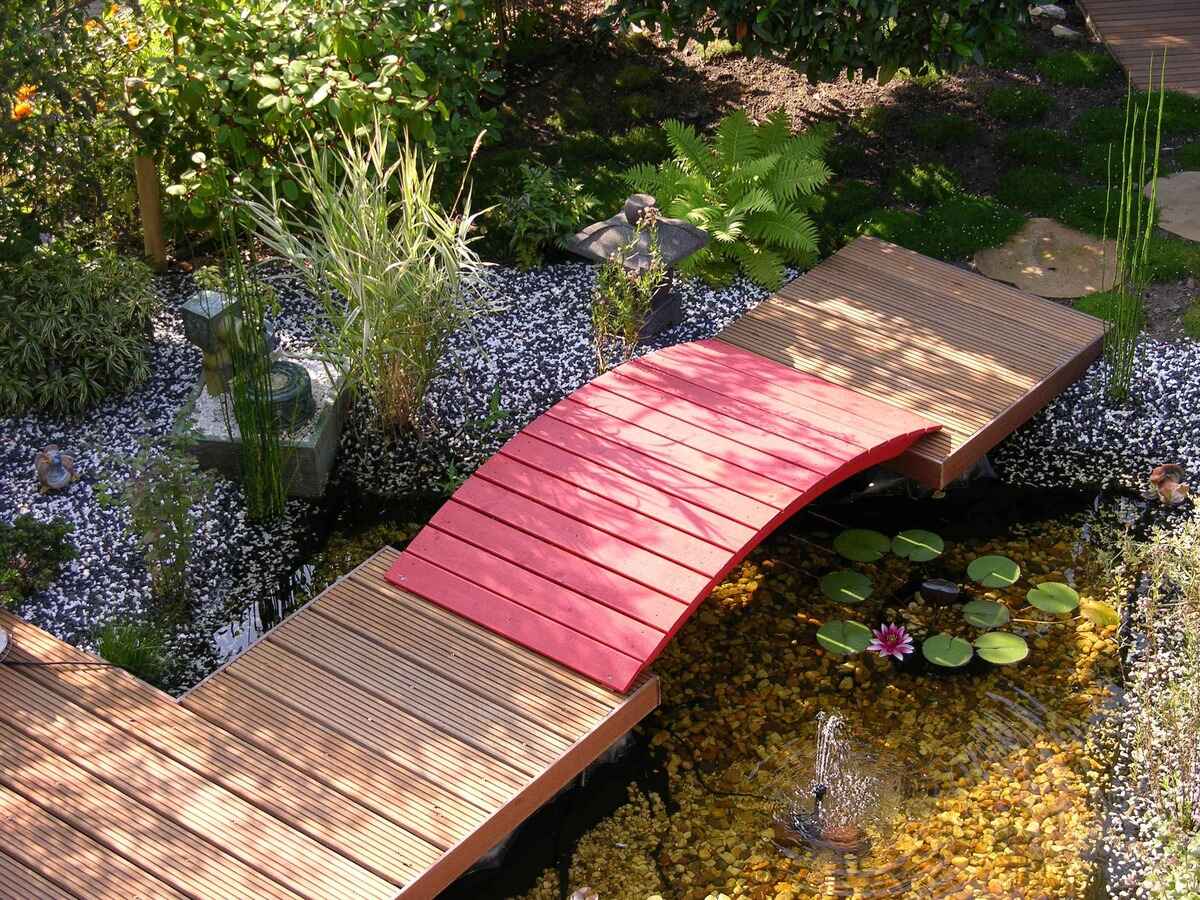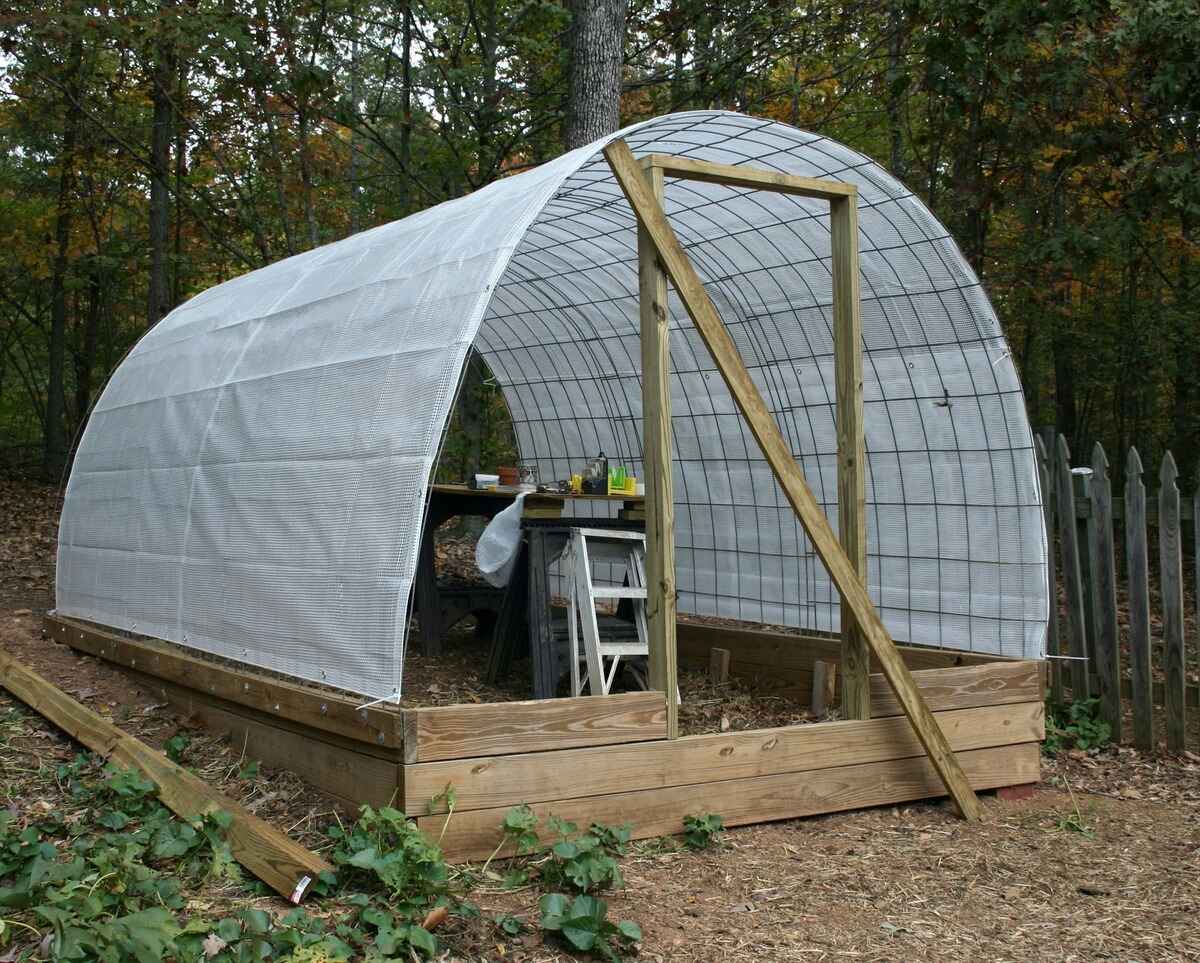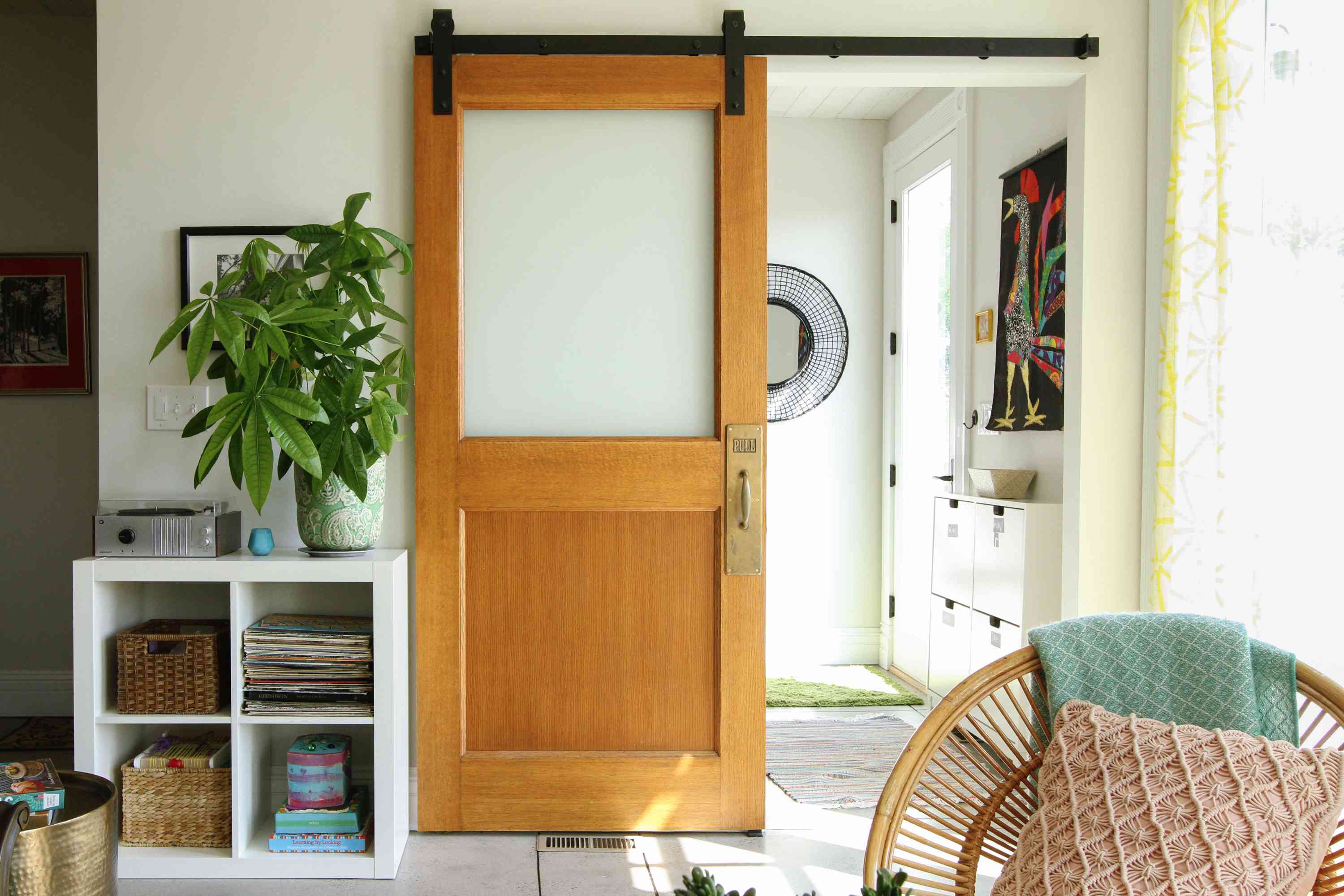Home>Create & Decorate>DIY & Crafts>DIY Rabbit Cage: Step-by-Step Guide To Building A Spacious And Comfortable Home For Your Furry Friend
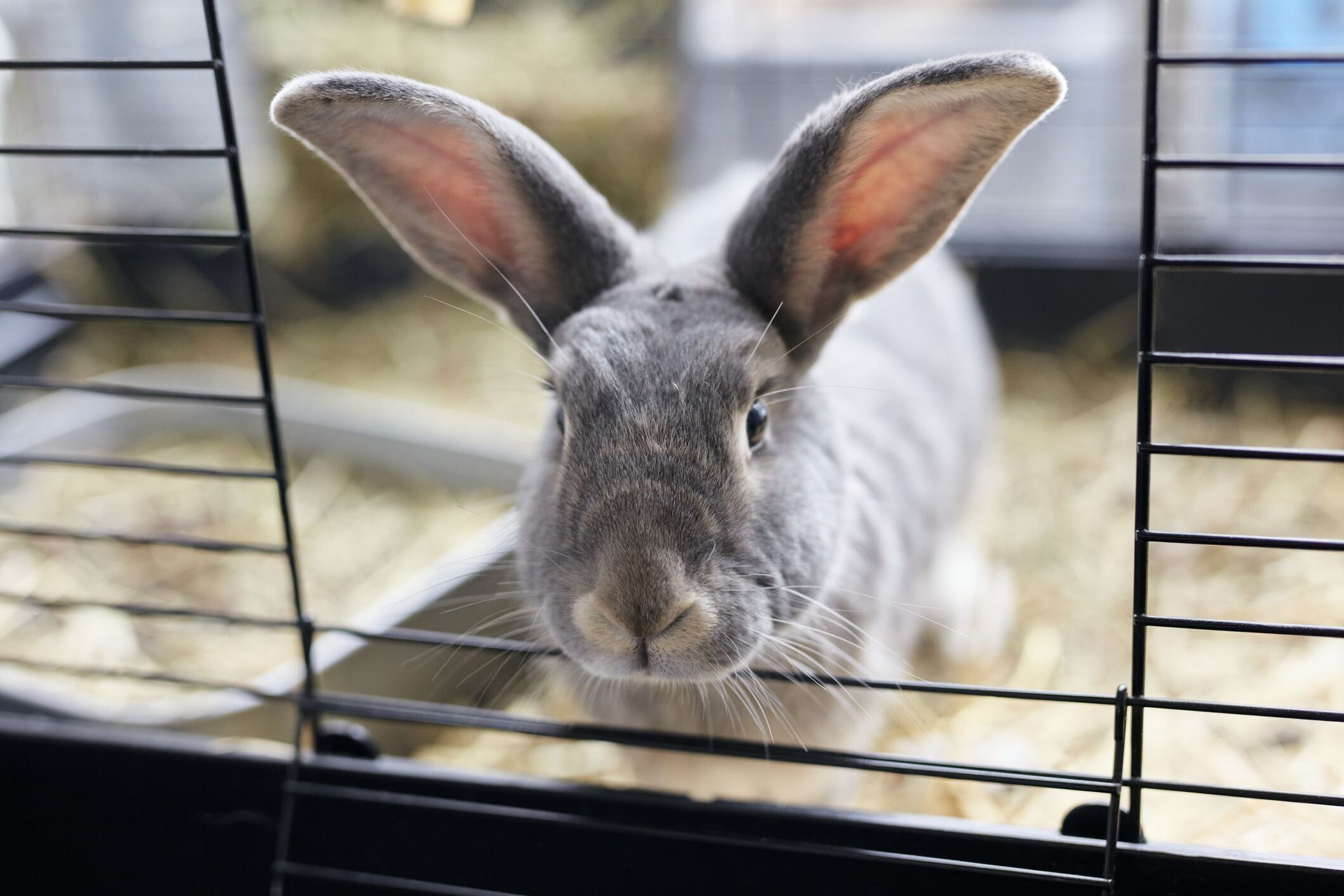

DIY & Crafts
DIY Rabbit Cage: Step-by-Step Guide To Building A Spacious And Comfortable Home For Your Furry Friend
Published: February 22, 2024

Senior Editor in Create & Decorate, Kathryn combines traditional craftsmanship with contemporary trends. Her background in textile design and commitment to sustainable crafts inspire both content and community.
Discover how to create a spacious and comfortable DIY rabbit cage with our step-by-step guide. Perfect for DIY & Crafts enthusiasts.
(Many of the links in this article redirect to a specific reviewed product. Your purchase of these products through affiliate links helps to generate commission for Twigandthistle.com, at no extra cost. Learn more)
Introduction
Welcome to the world of DIY rabbit care! Building a rabbit cage from scratch can be a rewarding and fulfilling project for both you and your furry friend. By creating a spacious and comfortable home for your rabbit, you can ensure their safety and well-being while expressing your creativity through a fun and practical endeavor.
In this comprehensive guide, we will walk you through the step-by-step process of constructing a rabbit cage that provides ample space for hopping, playing, and resting. Whether you're a seasoned DIY enthusiast or a novice looking to embark on your first project, this guide will equip you with the knowledge and confidence to create a customized living space for your beloved pet.
As you embark on this DIY journey, keep in mind that a well-designed rabbit cage not only offers a secure environment for your pet but also enhances the aesthetic appeal of your home. By tailoring the cage to your rabbit's specific needs and your personal style, you can create a harmonious and functional living space that seamlessly integrates into your home environment.
Throughout this guide, we will emphasize the importance of thoughtful planning, precise measurements, and the use of safe and durable materials. By prioritizing these key elements, you can ensure that your DIY rabbit cage is not only visually appealing but also structurally sound and long-lasting.
So, roll up your sleeves, gather your tools, and get ready to embark on a fulfilling DIY adventure. Whether you're building a cage for a small bunny or a larger rabbit, this guide will provide you with the essential knowledge and practical tips to bring your vision to life. Let's dive into the exciting world of DIY rabbit cage construction and create a comfortable and inviting home for your furry companion!
Read more: DIY Rabbit Hutch Plans: Step-by-Step Guide To Building A Spacious And Cozy Home For Your Bunny
Planning and Designing Your Rabbit Cage
Before diving into the construction phase, it's crucial to devote ample time to planning and designing your rabbit cage. This initial stage sets the foundation for a successful and functional end result. By carefully considering your rabbit's needs and your own preferences, you can create a customized living space that promotes comfort, safety, and aesthetic appeal.
Understanding Your Rabbit's Needs
Start by gaining a thorough understanding of your rabbit's behavior and space requirements. Consider the size and breed of your rabbit, as well as their activity level and habits. For example, larger breeds such as Flemish Giants will require more spacious accommodations compared to smaller breeds like Netherland Dwarfs. Additionally, rabbits are natural diggers and jumpers, so the cage should be designed to prevent escape and accommodate their natural behaviors.
Determining Cage Size and Layout
Based on your rabbit's needs, determine the ideal size and layout for the cage. A general guideline is to provide a minimum of 12 square feet of living space for a single rabbit, with additional room for exercise and exploration. Consider incorporating multiple levels or platforms to maximize vertical space and provide opportunities for climbing and perching.
Selecting Suitable Materials
When designing the cage, prioritize the use of safe and durable materials. Opt for non-toxic, rabbit-safe wood for the frame and consider using wire mesh for ventilation and visibility. Ensure that all materials are free from sharp edges or potential hazards that could harm your rabbit.
Incorporating Functional Features
Think about the practical aspects of the cage, such as access points for cleaning, feeding, and interacting with your rabbit. Plan the placement of doors, ramps, and removable trays to facilitate easy maintenance and care. Additionally, consider adding features such as hideaways, tunnels, and chew toys to enrich your rabbit's environment and promote mental stimulation.
Personalizing the Aesthetic
While functionality is paramount, don't overlook the opportunity to personalize the cage's aesthetic. Consider incorporating design elements that complement your home decor and reflect your personal style. Whether it's adding a splash of color, incorporating natural textures, or integrating decorative elements, infusing your creativity into the design can result in a visually appealing and harmonious living space for your rabbit.
By devoting careful thought and consideration to the planning and design phase, you can lay the groundwork for a well-crafted and tailored rabbit cage that meets both your rabbit's needs and your own preferences. With a clear vision in mind, you're ready to move on to the next exciting phase: gathering materials and tools to bring your design to life.
Gathering Materials and Tools
Gathering the necessary materials and tools is a crucial step in the process of building a DIY rabbit cage. By ensuring that you have all the required items on hand, you can streamline the construction process and minimize interruptions. Here's a comprehensive list of materials and tools you'll need to bring your rabbit cage design to fruition:
Materials:
- Wood: Select high-quality, untreated lumber for the frame and structural components of the cage. Opt for rabbit-safe wood species such as pine, fir, or cedar.
- Wire Mesh: Choose a sturdy wire mesh with small gaps to prevent your rabbit from escaping and to provide adequate ventilation.
- Flooring Material: Consider using rabbit-friendly flooring options such as linoleum or PVC for easy cleaning and maintenance.
- Hardware: Acquire a variety of screws, nails, and fasteners to assemble the cage securely.
- Non-Toxic Paint or Stain: If you plan to add a decorative finish to the wood, ensure that the paint or stain is non-toxic and safe for rabbits.
Tools:
- Measuring Tape: Accurate measurements are essential for ensuring the proper dimensions of the cage components.
- Saw: A saw, such as a circular saw or handsaw, will be necessary for cutting the wood to the required sizes.
- Drill and Bits: A power drill with assorted drill bits will facilitate the assembly of the frame and installation of hardware.
- Staple Gun: This tool is essential for securing the wire mesh to the frame effectively.
- Hammer and Nails: These basic tools will be used for traditional fastening and construction tasks.
- Paintbrushes or Rollers: If you plan to paint or stain the wood, ensure you have the necessary application tools.
By gathering these materials and tools, you'll be well-prepared to commence the construction of your DIY rabbit cage. With everything in place, you can proceed to the exciting phase of building the frame and bringing your design to life.
Now that you have all the necessary materials and tools at your disposal, it's time to roll up your sleeves and embark on the hands-on process of constructing the frame for your rabbit's new home.
Building the Frame
Building the frame serves as the foundational step in constructing a sturdy and secure rabbit cage. The frame provides the structural support for the entire enclosure, ensuring stability and durability. Here's a detailed breakdown of the process involved in building the frame for your DIY rabbit cage:
Step 1: Cutting the Wood
Begin by measuring and cutting the wood according to the dimensions outlined in your design plan. Use a measuring tape to ensure precision, and mark the wood before making the cuts. A saw, such as a circular saw or handsaw, will be essential for cutting the lumber to the required sizes. Pay careful attention to accuracy, as precise cuts are crucial for achieving a well-fitted and stable frame.
Step 2: Assembling the Components
Once the wood pieces are cut to size, begin assembling the frame components according to your design specifications. Use screws, nails, or appropriate fasteners to securely join the pieces together. A power drill with assorted drill bits will facilitate the assembly process, allowing you to create strong and reliable connections between the frame elements.
Step 3: Reinforcing the Corners
To enhance the structural integrity of the frame, consider reinforcing the corners with additional support. This can be achieved by adding corner braces or L-brackets, which help prevent the frame from becoming wobbly or unstable over time. By reinforcing the corners, you can ensure that the cage remains robust and capable of withstanding the activities of your energetic rabbit.
Step 4: Attaching the Wire Mesh
Once the basic frame is assembled, it's time to attach the wire mesh to the sides and top of the enclosure. Use a staple gun to secure the wire mesh to the wooden frame, ensuring a tight and secure fit. The wire mesh serves multiple purposes, providing ventilation, visibility, and containment for your rabbit while adding a protective barrier to prevent escape.
Step 5: Adding Access Points
As you finalize the frame assembly, incorporate access points such as doors and hatches to facilitate easy entry and maintenance. Ensure that the access points are securely attached and equipped with reliable latches to prevent accidental openings. These access points will enable you to interact with your rabbit, perform cleaning tasks, and provide food and water without difficulty.
By following these steps and paying close attention to detail, you can successfully build a robust and well-structured frame for your DIY rabbit cage. With the frame in place, you're ready to proceed to the next stages of adding flooring, walls, doors, and personalized touches to complete the construction of a comfortable and inviting home for your furry friend.
Adding Flooring and Walls
With the frame of the rabbit cage securely in place, the next crucial step is to add the flooring and walls to create a safe and comfortable living environment for your furry companion. This phase involves carefully selecting appropriate materials and implementing them to ensure the structural integrity and hygiene of the enclosure.
Installing the Flooring
When it comes to the flooring of the rabbit cage, prioritizing hygiene and comfort is essential. One popular and practical option is to use linoleum or PVC flooring, as these materials are easy to clean, resistant to moisture, and provide a comfortable surface for your rabbit to walk and rest on. Cut the flooring material to fit the dimensions of the cage, ensuring a snug and secure placement. By providing a smooth and easily maintainable flooring surface, you can create a hygienic and inviting space for your rabbit to thrive in.
Adding Wall Panels
Incorporating wall panels into the cage design serves multiple purposes, including providing privacy, insulation, and a sense of security for your rabbit. Consider using rabbit-safe wood panels to enclose the sides of the cage, ensuring that the walls are securely attached to the frame. The panels should be tall enough to prevent your rabbit from escaping and provide a sense of enclosure without obstructing ventilation or visibility. Additionally, the walls can serve as a canvas for personalization, allowing you to add decorative elements or visual enhancements to the interior of the cage.
Ensuring Safety and Accessibility
As you install the flooring and walls, prioritize safety and accessibility for both you and your rabbit. Ensure that the flooring material is securely fastened and free from any sharp edges or protrusions that could pose a risk to your rabbit's well-being. Similarly, inspect the wall panels to confirm that they are firmly attached and do not present any hazards to your pet. Additionally, consider incorporating access points such as removable panels or hinged sections to facilitate easy cleaning and maintenance tasks, ensuring that the cage remains a clean and comfortable habitat for your rabbit.
By meticulously adding flooring and walls to the rabbit cage, you are one step closer to providing your furry friend with a secure and inviting home. The thoughtful selection and installation of these components contribute to the overall functionality and aesthetics of the enclosure, setting the stage for the subsequent phases of installing doors, access points, and personalized accessories.
Installing Doors and Access Points
As you progress in the construction of your DIY rabbit cage, the installation of doors and access points plays a pivotal role in ensuring practicality and convenience. These components not only facilitate easy entry and exit for your rabbit but also enable you to perform essential maintenance tasks and interact with your pet. Here's a detailed exploration of the process involved in installing doors and access points within the rabbit cage.
Incorporating Entry Doors
The inclusion of entry doors in the design of the rabbit cage is essential for providing access to the interior space. Carefully measure and cut openings in the wall panels to accommodate the doors, ensuring that the dimensions align with the size of your rabbit and allow for easy passage. Select sturdy and secure door hardware, such as hinges and latches, to ensure smooth operation and reliable closure. By incorporating entry doors, you create a convenient means of interacting with your rabbit and attending to their needs while maintaining the security of the enclosure.
Adding Removable Panels
In addition to entry doors, consider integrating removable panels or sections within the cage design. These panels serve as access points for cleaning, feeding, and providing enrichment items to your rabbit. By incorporating removable elements, such as hinged panels or sliding sections, you can streamline the process of maintaining a clean and hygienic living environment for your pet. Ensure that the removable panels are securely attached and equipped with reliable fasteners to prevent accidental openings while allowing for effortless access when needed.
Ensuring Safety and Functionality
As you install doors and access points, prioritize the safety and functionality of these components. Inspect the hardware to confirm that it is durable and resistant to tampering, ensuring that the doors and removable panels remain secure at all times. Additionally, consider the ease of operation and maintenance, aiming to create a user-friendly and practical setup that simplifies your interactions with the rabbit and the upkeep of the enclosure. By prioritizing safety and functionality, you can create a harmonious balance between accessibility and security within the rabbit cage.
By thoughtfully incorporating entry doors and access points, you enhance the usability and versatility of the rabbit cage while promoting a seamless experience for both you and your furry companion. These components serve as gateways to interaction and care, allowing you to establish a nurturing and engaging environment for your rabbit within the confines of their customized living space. With the doors and access points in place, you're poised to add personalized accessories and final touches to complete the construction of a comfortable and inviting home for your beloved pet.
Adding Accessories and Final Touches
With the structural elements of the rabbit cage in place, it's time to infuse personality and functionality through the addition of accessories and final touches. This phase allows you to customize the living space to cater to your rabbit's specific needs while incorporating aesthetic enhancements that complement your home environment.
Read more: Basement Bedroom DIY: Step-by-Step Guide
Enrichment Items
Introducing enrichment items such as tunnels, hideaways, and chew toys can transform the rabbit cage into a stimulating and engaging habitat. These accessories provide mental stimulation, encourage physical activity, and offer opportunities for exploration and play. Consider incorporating a variety of textures and shapes to cater to your rabbit's natural instincts and preferences, creating a dynamic and enriching environment within the enclosure.
Feeding and Watering Stations
Incorporating designated feeding and watering stations within the cage promotes a consistent and organized approach to your rabbit's dietary needs. Utilize secure and spill-resistant bowls or attachable dispensers to ensure that food and water are readily accessible while minimizing the risk of spills or contamination. By establishing dedicated feeding areas, you can maintain a clean and hygienic living space for your rabbit while promoting healthy eating habits.
Bedding and Comfort Elements
Prioritize your rabbit's comfort by adding soft bedding material, such as hay or straw, to create a cozy resting area within the cage. Additionally, consider incorporating a comfortable resting platform or elevated perch to provide your rabbit with a vantage point and a sense of security. By attending to your rabbit's comfort needs, you create a nurturing and inviting space that promotes relaxation and well-being.
Personalized Decor and Visual Enhancements
Infuse your personal touch into the rabbit cage by adding decorative elements that complement your home decor and reflect your individual style. Consider incorporating natural textures, vibrant colors, or decorative accents to create a visually appealing and harmonious living space. By integrating personalized decor, you can seamlessly integrate the rabbit cage into your home environment while expressing your creativity and aesthetic preferences.
Final Safety Checks and Adjustments
Before finalizing the construction of the rabbit cage, conduct a thorough safety inspection to identify and address any potential hazards or areas requiring adjustments. Ensure that all fastenings, hardware, and components are secure and free from sharp edges or protrusions. Additionally, confirm that the cage provides adequate ventilation and that all access points function smoothly. By conducting a meticulous safety check, you can guarantee a secure and comfortable environment for your rabbit.
By adding accessories and final touches, you elevate the rabbit cage from a functional enclosure to a personalized and inviting home for your furry friend. The thoughtful integration of enrichment items, feeding stations, comfort elements, and personalized decor creates a dynamic and nurturing environment that caters to your rabbit's well-being and your own aesthetic preferences. With the addition of these final touches, your DIY rabbit cage becomes a harmonious and functional extension of your home, providing a secure and comfortable haven for your beloved pet.
Conclusion
In conclusion, embarking on the journey of building a DIY rabbit cage offers a fulfilling and rewarding experience that combines practical construction with personalized creativity. By following the step-by-step guide outlined in this comprehensive resource, you have gained valuable insights into the planning, design, and construction of a spacious and comfortable home for your furry companion.
Throughout the process, careful consideration of your rabbit's needs, the selection of safe and durable materials, and the integration of functional features have been emphasized. By prioritizing these elements, you have laid the foundation for a well-crafted and tailored rabbit cage that meets both your rabbit's requirements and your own preferences.
The planning and design phase allowed you to envision a customized living space that promotes comfort, safety, and aesthetic appeal. Understanding your rabbit's behavior, determining the ideal cage size and layout, and incorporating personalized touches have enabled you to create a harmonious and functional environment that seamlessly integrates into your home.
Gathering the necessary materials and tools equipped you with the essentials to bring your design to life. From high-quality wood and wire mesh to essential tools such as saws, drills, and fasteners, you have ensured that you are well-prepared to embark on the hands-on construction phase.
Building the frame served as the foundational step, providing structural support and stability for the entire enclosure. By meticulously assembling the components, reinforcing the corners, and attaching the wire mesh, you have created a robust and secure framework for the rabbit cage.
The addition of flooring, walls, doors, and access points further enhanced the functionality and usability of the cage, ensuring a safe and comfortable living environment for your rabbit. By prioritizing safety, accessibility, and practicality, you have established a nurturing and engaging habitat for your furry friend.
Finally, the incorporation of accessories and final touches allowed you to infuse personality and functionality into the rabbit cage. Enrichment items, feeding and watering stations, comfort elements, and personalized decor have transformed the enclosure into a dynamic and inviting home that caters to your rabbit's well-being and your own aesthetic preferences.
As you reflect on the completion of your DIY rabbit cage, take pride in the craftsmanship and dedication that have gone into creating a space where your rabbit can thrive and flourish. Your commitment to providing a secure and comfortable haven for your beloved pet is a testament to the bond and care you share. With a well-crafted and personalized rabbit cage, you have not only enriched your rabbit's living environment but also added a touch of creativity and warmth to your home.
In closing, the construction of a DIY rabbit cage is not just a practical endeavor; it is a labor of love that celebrates the unique bond between you and your furry companion. As you witness your rabbit exploring and enjoying their new home, may the satisfaction of a well-executed DIY project and the joy of nurturing a happy and contented pet fill your heart.

